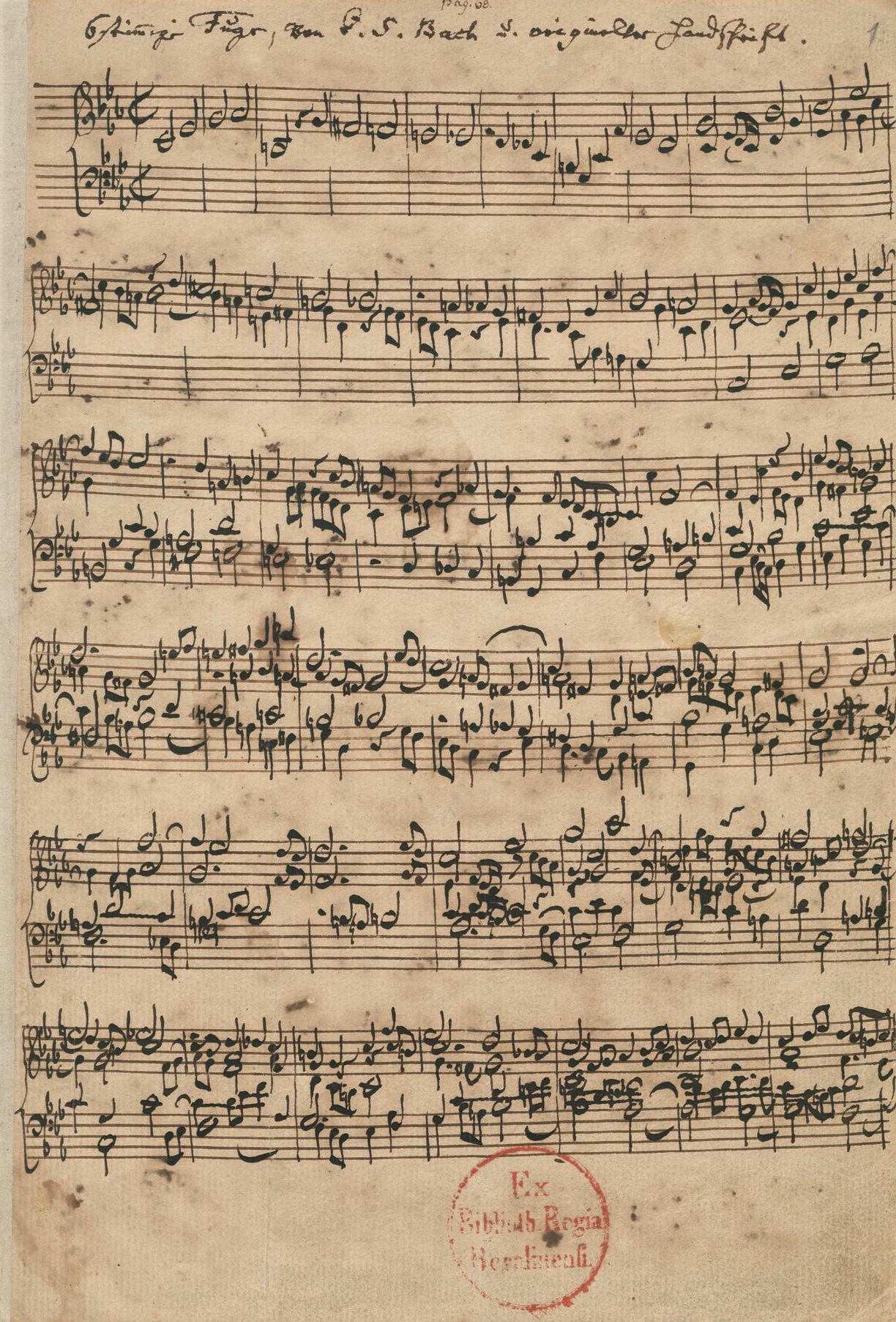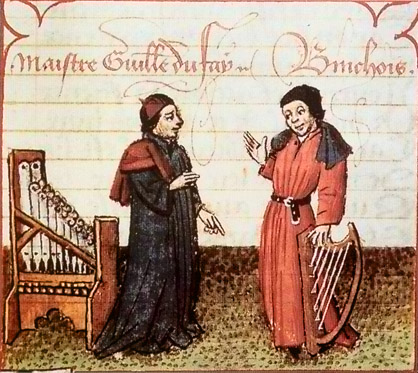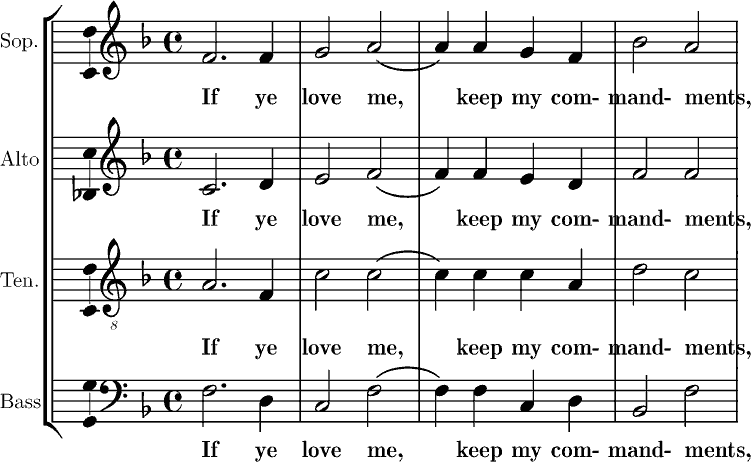|
Missa Pange Lingua
The ''Missa Pange lingua'' is a musical setting of the Ordinary of the Mass by Franco-Flemish composer Josquin des Prez, probably dating from around 1515, near the end of his life. Most likely his last mass, it is an extended fantasia on the '' Pange Lingua'' hymn, and is one of Josquin's most famous mass settings. Background The ''Missa Pange lingua'' is considered to be Josquin's last mass. It was not available to Ottaviano Petrucci for his 1514 collection of Josquin's masses, the third and last of the set; additionally, the mass contains references to other late works such as the '' Missa de Beata Virgine'' and the '' Missa Sine nomine''. It was not formally published until 1539 by Hans Ott in Nuremberg, although manuscript sources dating from Josquin's lifetime contain the work. Famous copyist Pierre Alamire included it at the beginning of one of his two compilations of masses by Josquin.Noble, Grove Style The hymn on which the mass is based is the famous '' Pange Lin ... [...More Info...] [...Related Items...] OR: [Wikipedia] [Google] [Baidu] |
Ordinary Of The Mass
The ordinary, in Catholic liturgy, Catholic liturgies, refers to the part of the Mass (liturgy), Mass or of the canonical hours that is reasonably constant without regard to the date on which the service is performed. It is contrasted with the ''Proper (liturgy), proper'', which is that part of these liturgies that varies according to the date, either representing an observance within the liturgical year, or of a particular saint or significant event, or to the ''Common (liturgy), common'' which contains those parts common to an entire category of saints such as Apostles in the New Testament, apostles or martyrs. The ordinary of both the Mass and the canonical hours does, however, admit minor variations following the seasons (such as the omission of "Alleluia" in Lent and its multiple additions in Eastertide). These two are the only liturgical celebrations in which a distinction is made between an ordinary and other parts. It is not made in the Christian liturgy, liturgy of the o ... [...More Info...] [...Related Items...] OR: [Wikipedia] [Google] [Baidu] |
Phrygian Mode
: The Phrygian mode (pronounced ) can refer to three different musical modes: the ancient Greek ''tonos'' or ''harmonia,'' sometimes called Phrygian, formed on a particular set of octave species or scales; the medieval Phrygian mode, and the modern conception of the Phrygian mode as a diatonic scale, based on the latter. Ancient Greek Phrygian The octave species (scale) underlying the ancient-Greek Phrygian ''tonos'' (in its diatonic genus) corresponds to the medieval and modern Dorian mode. The terminology is based on the '' Elements'' by Aristoxenos (fl. ), a disciple of Aristotle. The Phrygian ''tonos'' or ''harmonia'' is named after the ancient kingdom of Phrygia in Anatolia. In Greek music theory, the ''harmonia'' given this name was based on a ''tonos'', in turn based on a scale or octave species built from a tetrachord which, in its diatonic genus, consisted of a series of rising intervals of a whole tone, followed by a semitone, followed by a whole tone. : In ... [...More Info...] [...Related Items...] OR: [Wikipedia] [Google] [Baidu] |
Fugue
In classical music, a fugue (, from Latin ''fuga'', meaning "flight" or "escape""Fugue, ''n''." ''The Concise Oxford English Dictionary'', eleventh edition, revised, ed. Catherine Soanes and Angus Stevenson (Oxford and New York: Oxford University Press, 2006). ) is a Counterpoint, contrapuntal, Polyphony, polyphonic Musical composition, compositional technique in two or more voice (music), voices, built on a Subject (music), subject (a musical theme) that is introduced at the beginning in imitation (music), imitation (repetition at different pitches), which recurs frequently throughout the course of the composition. It is not to be confused with a ''fuguing tune'', which is a style of song popularized by and mostly limited to Music history of the United States, early American (i.e. shape note or "Sacred Harp") music and West gallery music, West Gallery music. A fugue usually has three main sections: an exposition (music), exposition, a development (music), development, and a final ... [...More Info...] [...Related Items...] OR: [Wikipedia] [Google] [Baidu] |
Counterpoint
In music theory, counterpoint is the relationship of two or more simultaneous musical lines (also called voices) that are harmonically dependent on each other, yet independent in rhythm and melodic contour. The term originates from the Latin ''punctus contra punctum'' meaning "point against point", i.e. "note against note". John Rahn describes counterpoint as follows: Counterpoint has been most commonly identified in the European classical tradition, strongly developing during the Renaissance and in much of the common practice period, especially in the Baroque period. In Western pedagogy, counterpoint is taught through a system of species (see below). There are several different forms of counterpoint, including imitative counterpoint and free counterpoint. Imitative counterpoint involves the repetition of a main melodic idea across different vocal parts, with or without variation. Compositions written in free counterpoint often incorporate non-traditional harmonies and c ... [...More Info...] [...Related Items...] OR: [Wikipedia] [Google] [Baidu] |
Guillaume Dufay
Guillaume Du Fay ( , ; also Dufay, Du Fayt; 5 August 1397 – 27 November 1474) was a composer and music theorist of early Renaissance music, who is variously described as French or Franco-Flemish. Considered the leading European composer of his time, his music was widely performed and reproduced. Du Fay was well-associated with composers of the Burgundian School, particularly his colleague Gilles Binchois, but was never a regular member of the Burgundian chapel himself. While he is among the best-documented composers of his time, Du Fay's birth and family is shrouded with uncertainty, though he was probably the illegitimate child of a priest. He was educated at Old Cambrai Cathedral, Cambrai Cathedral, where his teachers included Nicolas Grenon and Richard Loqueville, among others. For the next decade, Du Fay worked throughout Europe: as a subdeacon in Cambrai, under Carlo I Malatesta in Rimini, for the House of Malatesta in Pesaro, and under Louis Aleman in Bologna, where he ... [...More Info...] [...Related Items...] OR: [Wikipedia] [Google] [Baidu] |
Homophony
In music, homophony (;, Greek: ὁμόφωνος, ''homóphōnos'', from ὁμός, ''homós'', "same" and φωνή, ''phōnē'', "sound, tone") is a texture in which a primary part is supported by one or more additional strands that provide the harmony. One melody predominates while the other parts play either single notes or an elaborate accompaniment. This differentiation of roles contrasts with equal-voice polyphony (in which similar lines move with rhythmic and melodic independence to form an even texture) and monophony (in which all parts move in unison or octaves). Historically, homophony and its differentiated roles for parts emerged in tandem with tonality, which gave distinct harmonic functions to the soprano, bass and inner voices. A homophonic texture may be homorhythmic, which means that all parts have the same rhythm. Chorale texture is another variant of homophony. The most common type of homophony is melody-dominated homophony, in which one voice, often the h ... [...More Info...] [...Related Items...] OR: [Wikipedia] [Google] [Baidu] |
Cantus-firmus
In music, a ''cantus firmus'' ("fixed melody") is a pre-existing melody forming the basis of a polyphonic composition. The plural of this Latin term is , although the corrupt form ''canti firmi'' (resulting from the grammatically incorrect treatment of ''cantus'' as a second- rather than a fourth-declension noun) can also be found. The Italian is often used instead: (and the plural in Italian is ). History The term first appears in theoretical writings early in the 13th century (e.g., Boncampagno da Signa, ''Rhetorica novissima'', 1235). The earliest polyphonic compositions almost always involved a cantus firmus, typically a Gregorian chant, although by convention the term is not applied to music written before the 14th century. The earliest surviving polyphonic compositions, in the ''Musica enchiriadis'' (around 900 AD), contain the chant in the top voice, and the newly composed part underneath; however, this usage changed around 1100, after which the cantus firmus typically ... [...More Info...] [...Related Items...] OR: [Wikipedia] [Google] [Baidu] |
Superius (music)
In early music polyphony, ''superius'' or cantus is the Latin language-derived name given to the highest voice or part.Arnold D. (ed), ''New Oxford Companion to Music'', Oxford, (1983) See also * Voice type * Quintus (vocal music) The Latin word quintus, also ''quinta'' or ''quinta vox'', refers to the fifth voice in addition to the ''superius'', '' altus'', ''tenor'' and '' bassus'' in a piece of vocal polyphony. In Baroque vocal music, this fifth voice was added to the pri ... References External links * {{Music-theory-stub Vocal music ... [...More Info...] [...Related Items...] OR: [Wikipedia] [Google] [Baidu] |
Agnus Dei
is the Latin name under which the "Lamb of God" is honoured within Christian liturgies descending from the historic Latin liturgical tradition, including those of Roman Catholicism, Lutheranism and Anglicanism. It is the name given to a specific prayer that occurs in these liturgies, and is the name given to the music pieces that accompany the text of this prayer. The use of the title "Lamb of God" in liturgy is based on , in which St. John the Baptist, upon seeing Jesus, proclaims "Behold, the Lamb of God, who takes away the sin of the world!" Liturgical usage Latin Catholic The Syrian custom of a chant addressed to the Lamb of God was introduced into the Roman Rite Mass by Pope Sergius I (687–701) in the context of his rejection of the Council of Trullo of 692 (which was well received in the Byzantine East), whose canons had forbidden the iconographic depiction of Christ as a lamb instead of a man. The verse used in the first and second invocations may be re ... [...More Info...] [...Related Items...] OR: [Wikipedia] [Google] [Baidu] |
Sanctus
The ''Sanctus'' (, "Holy") is a hymn in Christian liturgy. It may also be called the ''epinikios hymnos'' (, "Hymn of Victory") when referring to the Greek rendition and parts of it are sometimes called "Benedictus". ''Tersanctus'' (Latin: "Thrice Holy") is another, rarer name for the Sanctus. The same name is sometimes used for the ''Trisagion''. In Western Christianity, the ''Sanctus'' forms part of the Ordinary and is sung (or said) as the final words of the Preface of the Eucharistic Prayer of remembrance, consecration, and praise. The preface, which alters according to the season, usually concludes with words describing the praise of the worshippers joining with the angels, who are pictured as praising God with the words of the ''Sanctus''. In the Byzantine Rite and general Eastern Orthodox Christianity, the ''Sanctus'' is offered as a response by the choir during the Holy Anaphora. Text In Greek ''Hágios, hágios, hágios, Kýrios Sabaṓth; plḗrēs ho ouranós ka� ... [...More Info...] [...Related Items...] OR: [Wikipedia] [Google] [Baidu] |
Credo
In Christian liturgy, the credo (; Latin for "I believe") is the portion of the Mass where a creed is recited or sung. The Nicene-Constantinopolitan Creed or the Apostles' Creed are the primary creeds used for this purpose. History After the formulation of the Nicene Creed, its initial liturgical use was in baptism, which explains why the text uses the singular "I ..." instead of "we ...". The text was gradually incorporated into the liturgies, first in the east and in Spain, and gradually into the north, from the sixth to the ninth centuries. In 1014 it was accepted by the Church of Rome as a legitimate part of the Mass. It is recited in the Western Mass directly after the homily on all Sundays and solemnities; in modern celebrations of the Tridentine Mass as an extraordinary form of the Roman Rite, the Credo is recited on all Sundays, feasts of the I class, II class feasts of the Lord and of the Blessed Virgin, on the days within the octaves of Christmas, Easter, and Pente ... [...More Info...] [...Related Items...] OR: [Wikipedia] [Google] [Baidu] |
Gloria In Excelsis Deo
"" (Latin for "Glory to God in the highest") is a Christianity, Christian Hymn#Christian hymnody, hymn known also as the Greater Doxology (as distinguished from the "Minor Doxology" or Gloria Patri) and the Angelic Hymn/Hymn of the Angels. The name is often abbreviated to Gloria in Excelsis or simply Gloria. The hymn begins with the words that the angels sang when announcing the birth of Christ to shepherds in : Douay-Rheims Bible, Douay-Rheims (in Latin). Other verses were added very early, forming a doxology. An article by David Flusser links the text of the verse in Luke with ancient Jewish liturgy. History is an example of the ''psalmi idiotici'' ("private psalms", i.e., compositions by individuals in imitation of the biblical Psalter) that were popular in the 2nd and 3rd centuries. Other surviving examples of this lyric poetry are the Te Deum and the Phos Hilaron. In the 4th century it became part of morning prayers, and is still recited in the Byzantine Rite Matins, Or ... [...More Info...] [...Related Items...] OR: [Wikipedia] [Google] [Baidu] |







